North East
Ground Report From Moreh: How Manipur’s Multicultural Frontier Town Became A Homogenised Centre Of The Kukis
Jaideep Mazumdar
Aug 22, 2023, 12:10 PM | Updated Sep 08, 2023, 08:44 PM IST
Save & read from anywhere!
Bookmark stories for easy access on any device or the Swarajya app.
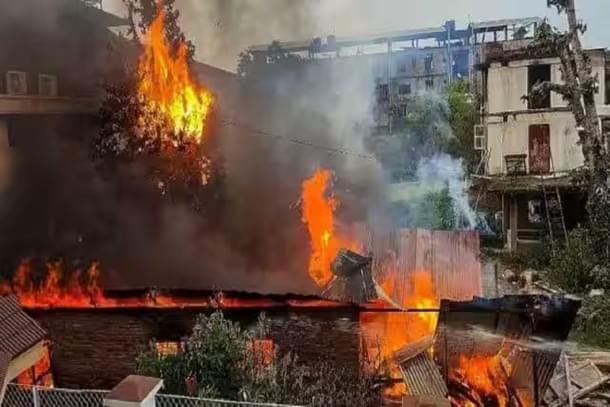
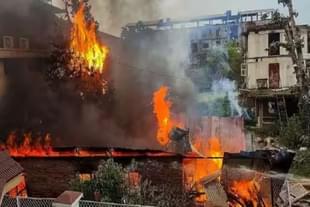
The bustling trading town of Moreh on the India-Myanmar border was, till exactly 30 years ago, a microcosm of India.
It was a multicultural town with an eclectic mix of Meiteis, Nagas, Tamils, Pangals (Meitei Muslims), Kukis, Marwaris, Gorkhas, Punjabis, Bengalis, Biharis and Malayalis, and others.
Moreh, about 100 kilometre southeast of Imphal, has been a trading post between the kingdom of Kangleipak (Manipur) and Burma for a few centuries at least.
Originally the land of Meiteis and Nagas with a sprinkling of Kukis, its commercially strategic location drew wealth seekers from many other communities.
Of them, the Tamils became the most prominent (migrant community) by the mid-1970s. By the late 1970s, the town's population stood at 35,000, and 15,000 of them were Tamils. The Tamils, due to their hard work and business acumen, also became the richest community in Moreh.
The Tamils Of Moreh:
The history of Tamils in Moreh is a fascinating one.
In 1962, General Ne Win seized power in Burma and ordered all non-Burmese, including people of Indian origin who had been staying there for decades, to leave the country.
The Tamils, who were engaged in various trades and businesses in Burma, were the largest expatriate community there and left for India (Tamil Nadu).
But many could not adjust to life in Tamil Nadu and yearned to return to Burma. A dozen-odd families journeyed through Andhra Pradesh, Odisha and Bengal to Assam and then Manipur, and attempted to cross over to Burma through Moreh.
But they were pushed back by Burmese security forces. Another lot of Tamils tried to do the same in early 1963, but were also pushed back.
A Tamil intelligence officer posted in Imphal helped the Tamil families settle down in Moreh, after negotiations with the Meiteis and Nagas.
The enterprising Tamils engaged in cross-border trade and thanks to them, business flourished. Encouraged by their success, many more Tamil families who had fled Burma and settled down in Tamil Nadu migrated to Moreh.
The Tamils constructed a huge mandir dedicated to Goddess Angala Parameshwari in 1967 and two years later, the Tamil Sangam Moreh was founded.
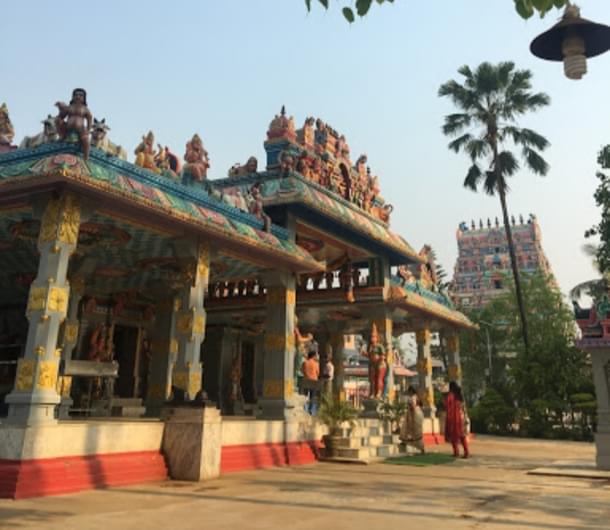
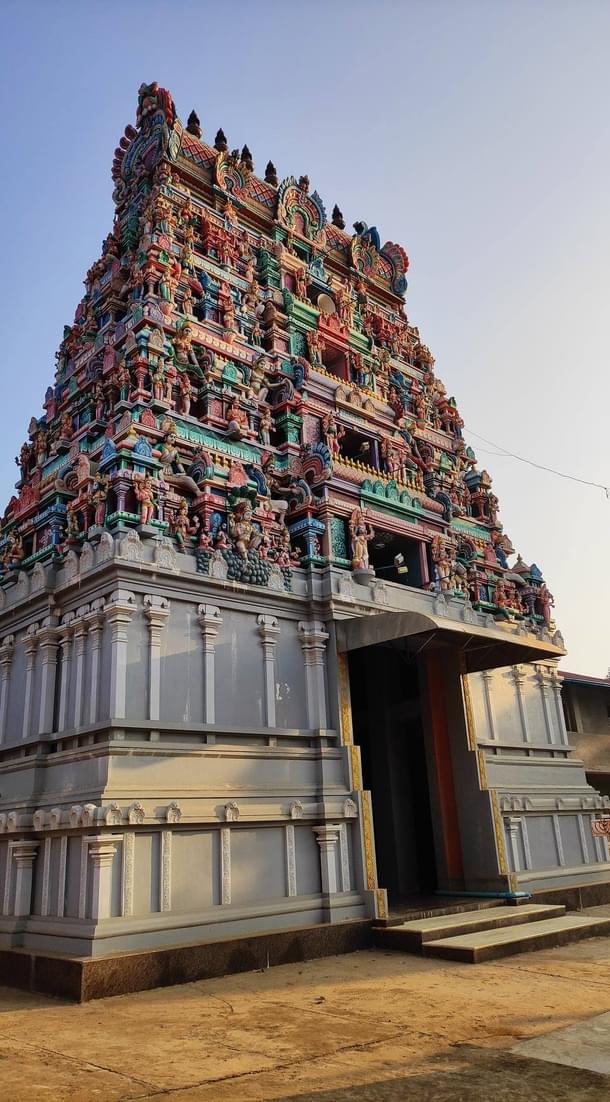
The Sangam started a school to teach Tamil to children of the community and Pongal became the largest festival of Moreh along with Lai Haraoba, a Meitei religious festival celebrating the traditional deities of Sanamahism.
The Other Communities Of Moreh
The Gorkhas of Moreh also constructed a mandir dedicated to Bhagwan Krishna and the Krishna Janmastami celebrations became an important part of Moreh’s religious calendar.
Durga Puja celebrations by Bengalis, Guruparab (Guru Nanak Jayanti) of the Sikhs, Chhat Puja of Bihar and Onam celebrations of the Malayalis used to see participation by all communities. Eid celebrations by the Pangals were also a time of festivities for the entire population of Moreh.
All these festivals overshadowed Christmas celebrations by the Nagas and Kukis — this was an important indicator that the non-tribals were in a majority in Moreh.
In fact, recall old-timers of Moreh, Christmas was a low key affair celebrated only by the Nagas and Kukis. There were only two small churches in the town at that time and, says septuagenarian D Soumya Rajan, 25 December was a working day for traders in Moreh.
“All communities used to live and work in perfect harmony till the early 1990s. There was no tension and life was very peaceful. It was really very beautiful,” said Rajan, who settled down in Moreh as a young lad of 15 with his parents and siblings in 1964.
N Biswojit Singh, a former police officer who was posted in Moreh in the late 1980s and early 1990s, told Swarajya that all the communities lived in a cordial atmosphere and there was a lot of bonhomie among all the people.
The End Of Moreh’s Innocence
Kuki-Naga Clashes:
But all that changed with the Naga-Kuki clashes that rocked Manipur in 1992-1993.
The Kuki community had started growing in numbers with substantial influx from Myanmar. These new illegal immigrants belonged to the Chin sub-tribe that is part of the larger Kuki-Chin-Zo ethnic group.
The Nagas of Moreh suffered a lot with Kukis attacking and killing a few of them, looting and burning down their houses and even demolishing the Naga Church.
Most Nagas were forced to flee to the neighbouring Naga-majority Ukhrul district. The population of Nagas in Moreh declined sharply from around 12,000 to just a few hundred by 1994.
The Nagas of Moreh were replaced by Kukis who were displaced from other parts of the state during the clashes.
In fact, the Meiteis of Moreh took the lead in helping internally displaced Kukis settle down, in and around Moreh.
The Meiteis, along with other communities of Moreh, cleared jungles around Moreh and helped the displaced Kukis build their huts in those clearings.
“The Meitei community and others even provided foodstuff, building materials and financial aid to the Kukis to help them restart their lives in Moreh. That period also saw a large illegal influx of Kuki-Chins from Myanmar. They were also provided shelter by the hospitable population of Moreh,” said former police officer Singh.
The illegal influx of Kuki-Chins from Myanmar in the early 1990s was triggered by the military junta’s crackdown on widespread protests in that country following the annulment of the results of the 1990 general elections.
The National League for Democracy (NLD) led by Aung San Suu Kyi registered a landslide victory, but the military junta refused to recognise the results and continued to rule the country. That led to largescale protests and a military crackdown that led to thousands of Kuki-Chins fleeing Myanmar and entering Manipur.
The Kuki settlers were even provided with firearms and arms training by state entities to protect themselves from counter-attacks by Nagas.
The Naga-Kuki clashes also resulted in the smaller ethnic groups like the Paites being forcibly integrated into the larger Kuki identity. This was the start of the larger project by Kukis to organise and integrate themselves under one identity in order to assert themselves politically, socially and economically.
Within a couple of years, the Kukis became numerically strong and started asserting themselves. Soon, clashes with the Tamils followed.
Kuki Attacks On Tamils:
“The arming of the Kukis led to the growth of militancy among them (the Kukis). They started imposing stiff taxes on us in 1994 and young men from the (Kuki) community started picking fights with us almost daily. They also started taking away materials from our shops. A group of Kuki men would walk into a shop owned by a Tamil and walk away without paying. If challenged, they would assault us and ask us to put up with their illegal acts or leave Moreh,” said K Ponmudy, a Tamil veteran who had left Moreh in 1996.
Soon, the extortion and acts of vandalism by Kukis triggered tension between the two communities.
In April 1995, the Kukis kidnapped a Tamil businessman and demanded a huge sum of money as ransom. The family of the victim refused to pay the huge ransom and started negotiating, but the Kuki militants killed the man.
This greatly angered the Tamil community which brought out a rally to protest the murder. The rally was attacked by Kukis and that triggered clashes between the two communities, leaving nine dead.
In that cycle of violence, Tamil houses and shops were looted and destroyed. The Christian Kukis even attacked and defiled the Tamil mandir.
The clashes led to an exodus of Tamils from Moreh, and they number just 1,500 in Moreh today.
The Kukis then started targeting the other communities — the Gorkhas, Marwaris, Bengalis, Biharis and Malayalis. The Kuki militants imposed monthly taxes on businessmen and traders belonging to these communities, and started harassing them regularly.
Within a few years, most members of these communities had left Moreh. There are no Onam and Guruparab celebrations in Moreh today. The few Gorkhas remaining in Moreh just don’t have the heart to celebrate Janmastami or even pray regularly at the mandir they built for Bhagwan Krishna.
Durga Puja is also no longer celebrated in Moreh. In fact, an overwhelming presence of Churches and Christian symbols like the cross at public places discourages celebrations of other faiths.
Members of the Tamil Sangam who did not wish to reveal their names out of fear of retaliation told Swarajya that even Pongal is a low key affair in Moreh.
“It was once a grand celebration that all communities participated in. The Pongal procession used to see largescale participation by all communities, and we had incorporated many elements of Meitei culture and religious rites in our celebration. It (Pongal) used to be a grand affair that Meiteis also used to celebrate,” recalled 56 year-old Sunil (he gave only his first name).
Kukis Attacks On Meiteis in Moreh:
Once the Kukis became numerically strong and their population reached the halfway mark in Moreh, they started imposing stiff takes on Meitei businessmen.
The modus operandi was the same as the one the Kukis had followed to drive out the Tamils from the frontier town.
“The Kuki militants, made up mostly of cadres from Myanmar or new migrants from that country, started extorting small amounts of money from us. Over time, their demands grew and the small sums became substantial. Even Meitei households had to pay taxes every three months to Kuki militants. Every vehicle going to or coming from Imphal had to pay a fixed sum to the Kuki militant groups,” said Th Santosh, a businessman from Moreh who fled Moreh in May this year and is staying with relatives in Imphal.
Santosh, 62, told Swarajya he could never imagine that the Kukis, who came as penniless refugees to Moreh thirty years ago and were helped by Meiteis to restart their lives, could turn against their erstwhile benefactors. “The Kukis have stabbed us in our backs,” said Santosh.
As with the Tamils, the Meiteis also reached the end of their tether soon and tensions began to rise between the Meiteis and Kukis. It took one incident to trigger a major clash in 2007.
A group of Kuki militants entered a garments shop owned by the Meitei lady and started walking away with some garments. The lady objected and raised a hue and cry. Other Meitei shop owners caught the Kukis and thrashed them.
That triggered retaliation by the Kukis who attacked Meiteis and killed eleven of them. The Kukis also torched Meitei houses and shops after looting them.
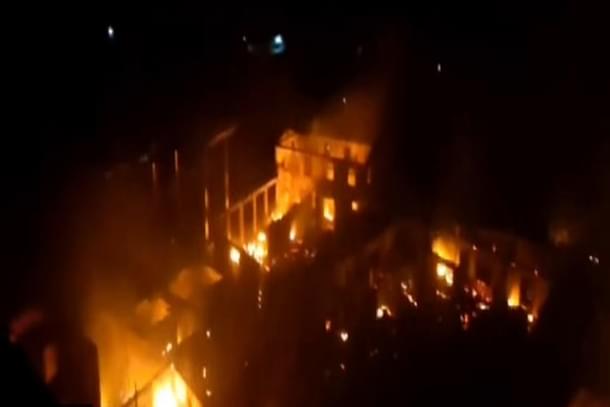
That led to a moderate exodus of Meiteis from Moreh.
“Young Kukis, especially those belonging to families who migrated illegally in recent times to Manipur from Myanmar, started throwing their weight around, harassing us and targeting girls and women from our community. They also started luring our community members with offers of protection and immunity from extortions to convert to Christianity,” said N Konjengbam Singh, a trader who used to run a shop in Moreh.
Another round of attacks by Kukis on Meiteis in Moreh followed in 2015. That attack was triggered by the Meiteis’ demand for introduction of an Inner Line Permit system in Manipur to restrict the entry of non-indigenous people into the state.
The Kukis interpreted the demand as an attempt to target the huge numbers of illegal immigrants belonging to their ethnic group from Myanmar into Manipur.
Kukis vandalised and destroyed shops and properties belonging to Meiteis and physically attacked the Meiteis, not even sparing women and children.
Predictably, this led to another round of exodus of Meiteis from Moreh.
Anyone wishing to run a business, rent a house or even live in Moreh for more than a couple of weeks is required to seek permission from the Kuki-run Hill Tribal Council (HTC). Such permissions come for a substantial fee.
Even government officials posted in banks and central and state government establishments in Moreh have to pay an unofficial ‘tax’ to the HTC.
The Violence This Time
On 3 May this year, the Kukis launched their attacks on the Meitei community in Moreh by torching the building housing the Moreh Meitei Council.
That was followed by looting and destruction of houses and shops belonging to the Meiteis. More than a 100 shops and houses were set on fire by the Kukis. An estimated one dozen Meitei men and women were butchered by the Kukis.
The first casualty in Moreh was an old Meitei lady who was locked inside her house by Kukis who then set the house on fire. She died a horrific death.
The rampage followed on 4 May as well. Only a few dozen Meitei houses and shops — all of them looted — remained in Moreh. The Kukis torched 44 houses belonging to Tamils as well.
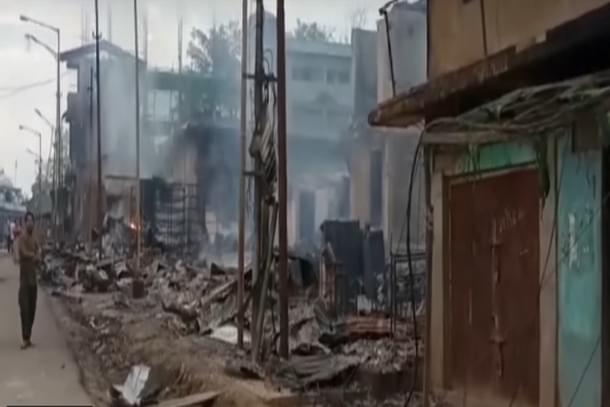
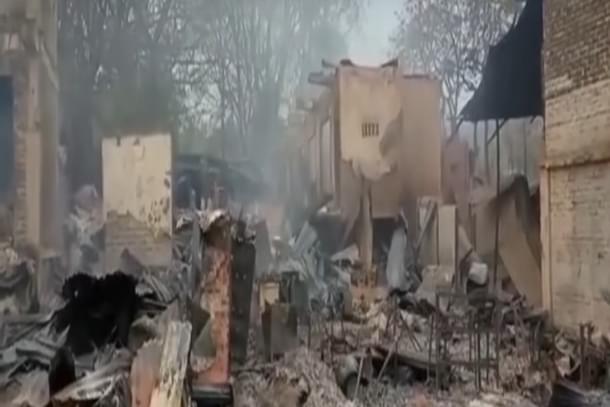
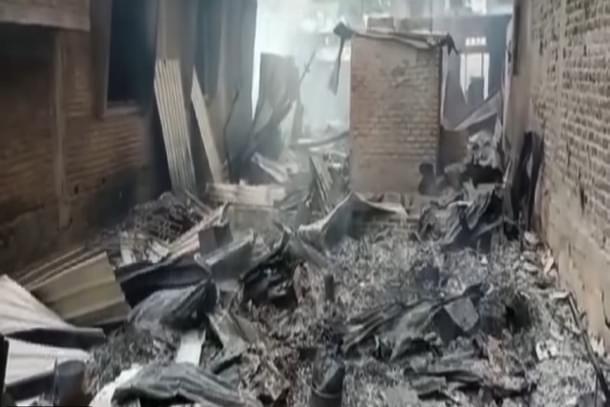
In early May also, the Kukis attacked Tamils and looted some shops belonging to the Tamils. The scared Tamils sent a delegation to meet Tamil Nadu Chief Minister M K Stalin, who assured them help.
Tamil Sangam Moreh president V Sekhar met Stalin and leader of opposition Edappadi K Palaniswami on 18 May to seek their intervention. Both assured them that they would take up the issue of security of Tamils of Moreh with the Manipur state authorities.
But those assurances did not work since the Manipur government has little control over affairs in Moreh.
Presence Of Security Forces
What is surprising is that the Kukis have effected the exodus of other communities from Moreh despite the heavy presence of the Assam Rifles, the Manipur Police and other security forces.
The Assam Rifles is widely blamed for its failure to prevent large-scale illegal influx of Kuki-Chins from Myanmar. In recent months, this influx has assumed epidemic proportions.
The Assam Rifles and other central security forces have also been accused of being soft on the Kukis and looking the other way when Kukis attacked Meiteis and other communities and destroyed their properties over the years.
It is strange that in a sensitive border town that is guarded by a central security force, illegal immigrants from another country have been allowed to grow in strength and become not only the dominant community, but also a law unto themselves.
***************************
The response of the Assam Rifles to the above report is being reproduced below, unedited.
Dear Editor,
From the perspective of the Assam Rifles and the security forces in the region, it is important to clarify a few points regarding the situation in Moreh:
(a) The portrayal of Moreh, a thriving semi-cosmopolitan town traversed by the trans-Asiatic road and boasting the presence of numerous state and central government agencies, as having a deteriorated law and order situation is indeed incomprehensible. Moreh being a mini replica of Imphal City with multiple ethnicities, has all central and state govt agencies, including the customs dept firmly entrenched in the administration machinery. Internal law and order matters are primarily the responsibility of the respective state government agencies, and holding these accountable for their performance is imperative for addressing any shortcomings in governance and security.
(b) The Assam Rifles has successfully safeguarded the lndo Myanmar border from cross border infiltration of militia notwithstanding the FMR arrangements (or the lack of it) along the length of the IMB. In the last two years Assam Rifles has pushed back approx five thousand Myanmarese citizens from IMB, and shared details of the balance 1200 localised refuge seekers proactively with the state agencies for further disposal. Additionally the AR in the Moreh region alone has seized a contraband of approx. 1100 Cr in the past five years. In the same duration and location, it was with the persistent efforts of AR that 76 insurgents were apprehended/surrendered along with weapons before being handed over to the State Police.
In the context of Moreh, the internal security situation remains stable, allowing the state government to exercise its authority effectively. Blaming the Assam Rifles, whose primary role revolves around border guarding, for issues related to internal law and order is an oversimplification of a complex matter presumably with an ulterior motive by novices in matters internal security. Responsible journalism should refrain from laying undue blame on external entities and instead focus on addressing challenges collaboratively, recognizing the shared responsibilities in maintaining law and order.
(Aabha KS)
Leiutenent Colonel
Staff Officer
(PublicRelations & Media)
******************
Response of Jaideep Mazumdar
1) The officers of the armed forces quoted by me are my trusted sources whose identities and ranks are, of course, confidential and shall not be divulged.
2) The presence of Chin-Kuki rebels in Moreh has been widely reported in the local media. The claim that Moreh remains "firmly and safely under the control of state and central security forces" is called into question by the violence--primarily attacks on properties of other communities by Kuki rebels--that town has witnessed repeatedly since May 3-4, 2023.
3) Many reports have also appeared in the local media of the differences between the Assam Rifles and Manipur Police and of the Assam Rifles obstructing the police from carrying out their duties. A video of one such incident is in public domain and the FIR filed by the Manipur Police against the Assam Rifles also negates the claim that differences between the two forces is "conjectural".
4) As for the killing of BSF jawans at Moreh and Sugnu, it was believed that they were killed by precision shots fired over a considerable distance. Is the letter of the AR suggesting that residents of Moreh possess weapons sophisticated enough to carry out such hits, despite the IMB being guarded by the AR?
5) The AR claims that the portrayal of Moreh "as having a deteriorated law and order situation is incomprehensible". How would the AR, then, explain the violence perpetrated on the properties and people belonging to the Meitei and other communities by the Kuki rebels in Moreh? Are those signs of a perfectly normal "thriving, semi-cosmopolitan" Moreh? Is the Assam Rifles implying that ethnic violence did not devastate Moreh more than once since early May this year?
6) This writer is well aware that law and order is the primary responsibility of the state police and the Manipur police have been criticised, rather heavily, by this writer in articles and interviews many times for its failure to prevent ethnic violence and take action against the perpetrators of violence. This writer is also well aware of the primary mandate of the Assam Rifles. It is, however, an indisputable fact that the AR has often been seen in Moreh, and many other places in Manipur, engaged in law and order duties.
7) Writing about events and situations without fear or favour is essence of responsible journalism. If that means critically examining the role of any state entity, so be it.





